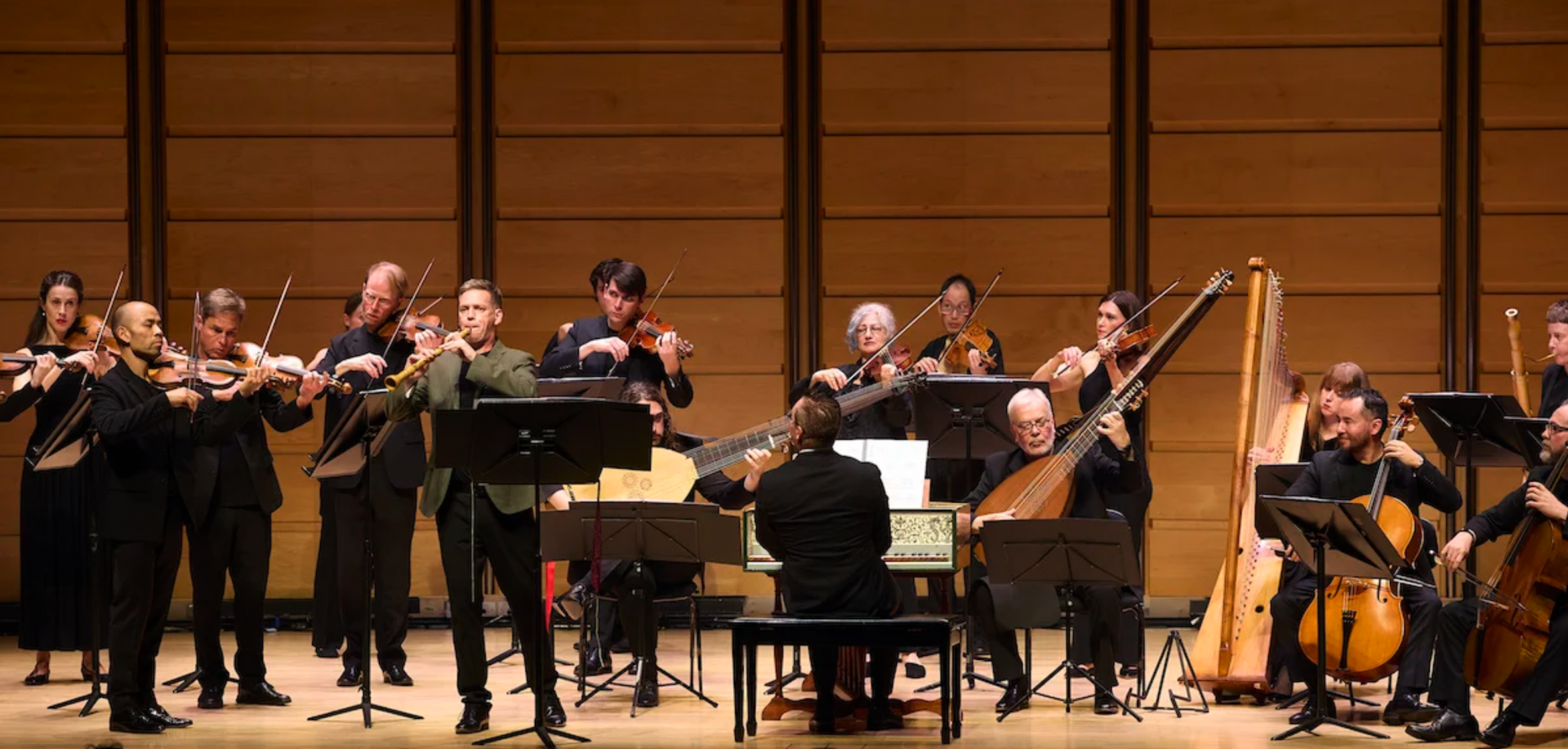Putting the rock in Baroque.
As Paul Dyer said from the outset, this concert was an homage to Rome. In particular, it was an homage to the energetic Italian style. With Corelli, Pergolesi, Albinoni, Locatelli and Vivaldi, we have a taste of Rome, Bologna, Naples and Venice. It is therefore not surprising that this concert was a festival of the concerto grosso.
What better way to start than with the veritable father of the concerto grosso, Corelli, who mastered that art form. The short adagio of the Concerto Grosso in D major, Op 6 No 4 served as a neat little prologue before the movement-proper – the allegro. Shaun Lee-Chen and Ben Dollman thrived on the brisk, if not arduous, tempo. Their dialogue gave the effect of birdsong, but at times it was so quick that it lost some of its sharpness.
The following Adagio features a series of pulsating falling chromatic fourths. There was no descant on the violin, which is what the bare chords of this movement were practically raring for, and which would have matched Lee-Chen’s virtuosity as an improvisor. But there were delightful cadences by Hannah Lane on harp.
The closing allegro ascends into something of a ferocious battaglia before it fizzes out in the finish.
Albinoni’s oboe concerto in D minor is deservedly well-known. Adam Masters on oboe did very well. The second movement recalls the second movement of Vivaldi’s Winter.
Pergolesi was most known in his time for one of the most widely printed scores of the Baroque – his Stabat mater. That is not to mention his operas, one of which is soon to be performed by Pinchgut. A sense of his operatic sense of humour can be gleaned in the performance of his Concerto for violin in B-flat major. Lee-Chen channelled all the abrupt stops, the call-and-responses, and the whimsical passages of the opera buffa. The third movement was the most virtuosic, giving Lee-Chen an opportunity to show off his well-polished double-stopping technique.
After the interval came Locatelli’s Introduttione V in D major, Op4 No 5. It is often difficult to pin Locatelli’s style, bordering as it does between the Baroque and the Rococo. His concerto grosso here was full of playful rhythms, but when the violins ascended to the higher registers the tone started to become a bit shaky.
Vivaldi’s Concerto alla rustica is as rustic as it gets. We have Nicholas Pollock on baroque guitar with lively strumming to give a rustic percussive effect. The entire conceit was to evoke a peasant dance.
The most interesting part of the concert was the performance of Vivaldi’s Concerto for violine in C minor, RV 401. So great was Vivaldi’s affinity for strings that he gave the unloved violine, often relegated to the back of the ensemble, its chance to shine. It is often performed with cello, but the violine fit the mellow, brooding tone of the entire piece much better. At times the instrument seemed to sonorous and delicate for all the jumping melismas Vivaldi calls for. This is not an easy piece to play, but Robert Nairn did well in making the melodies distinctive and expressive, not to mention the sheer nimbleness of his playing.
Bach was so taken aback by the sheer effect of Vivaldi’s “Grosso Mogul” concerto that he felt compelled to transcribe it for organ (and probably performed on his favourite, the pedal clavichord). One can readily see why. It is as Italian as it gets – lively, but happy to be brooding, shifting metres and modes quickly. In the second movement, Lee-Chen gave a gushing cantabile recitative and breath-taking improvised solos in the closing movement.
